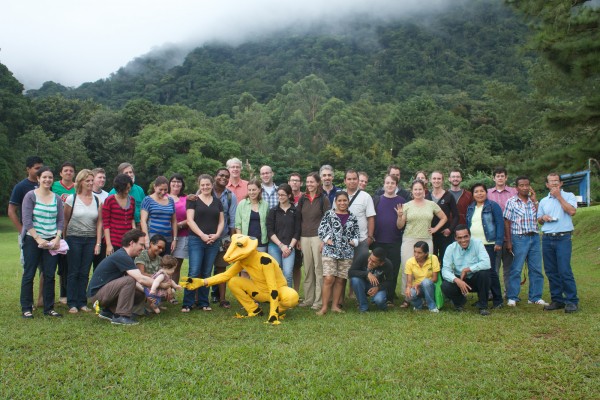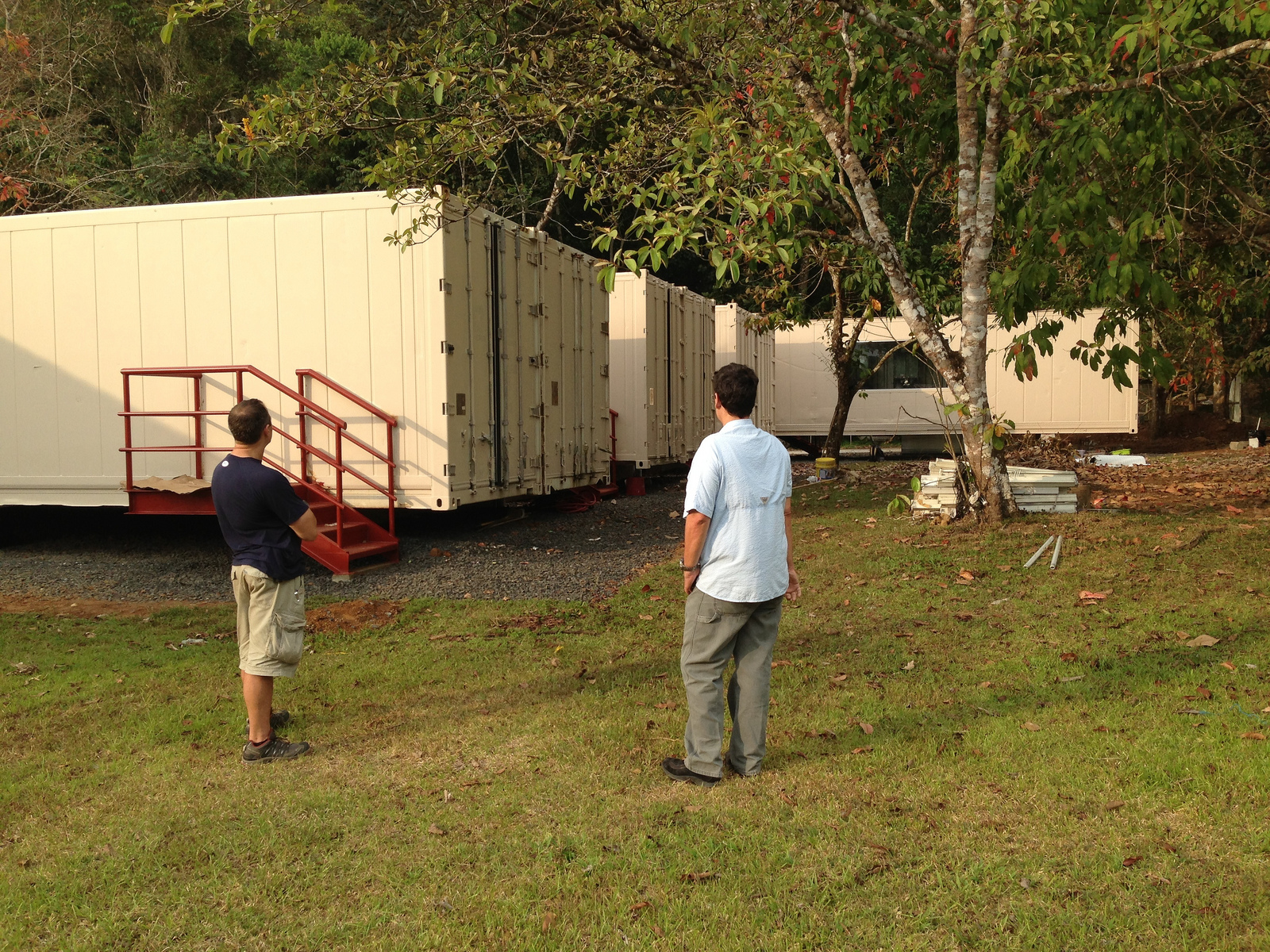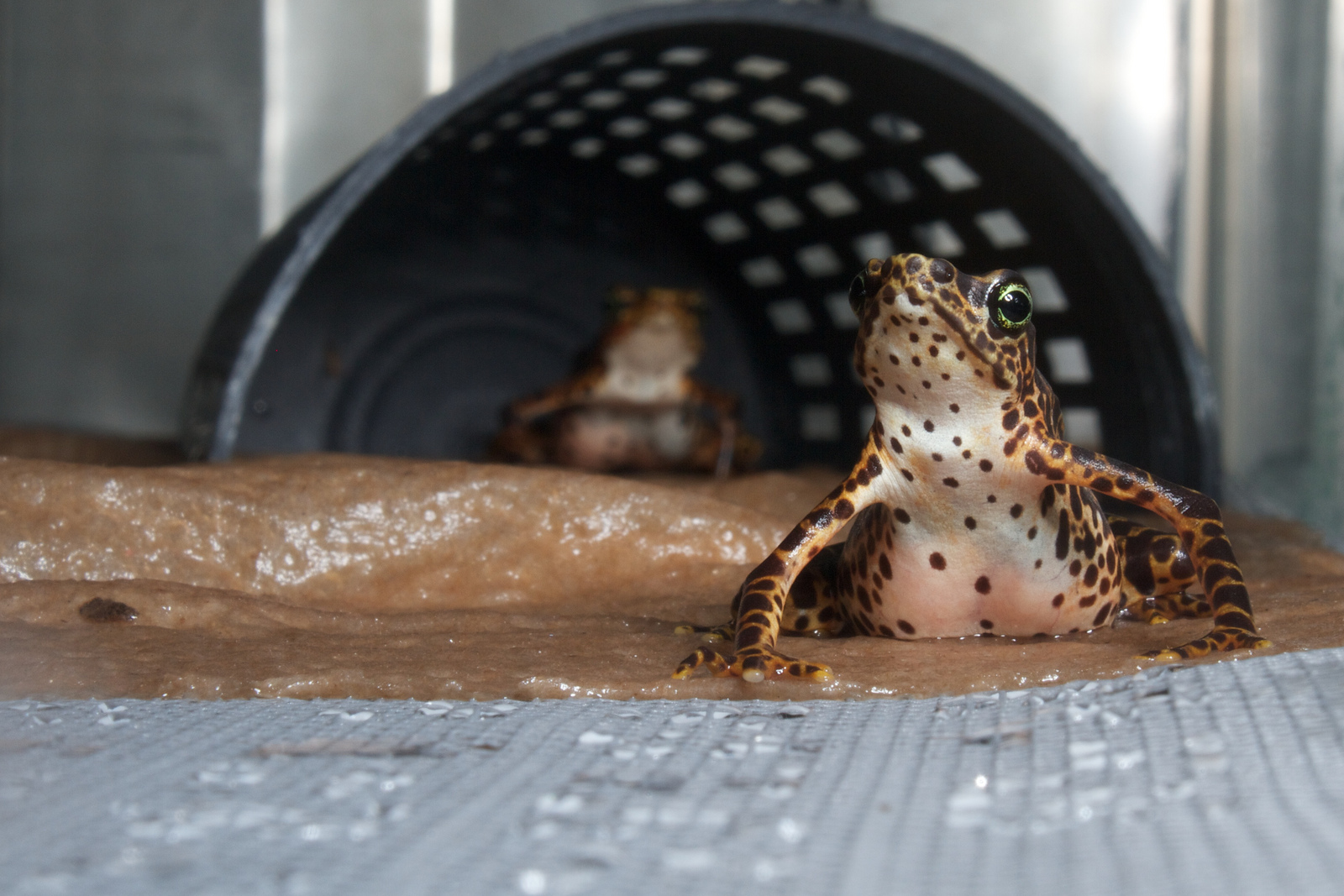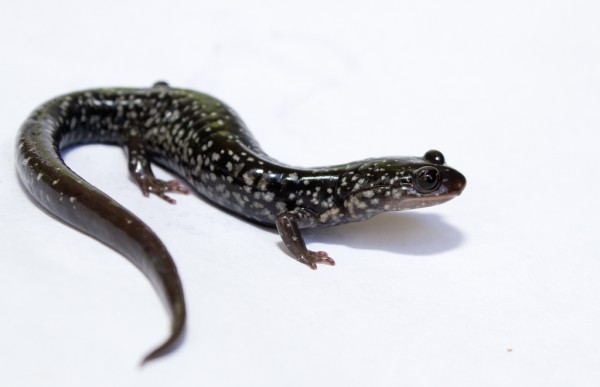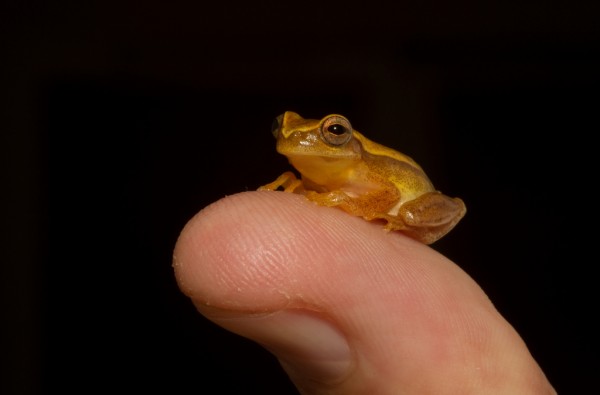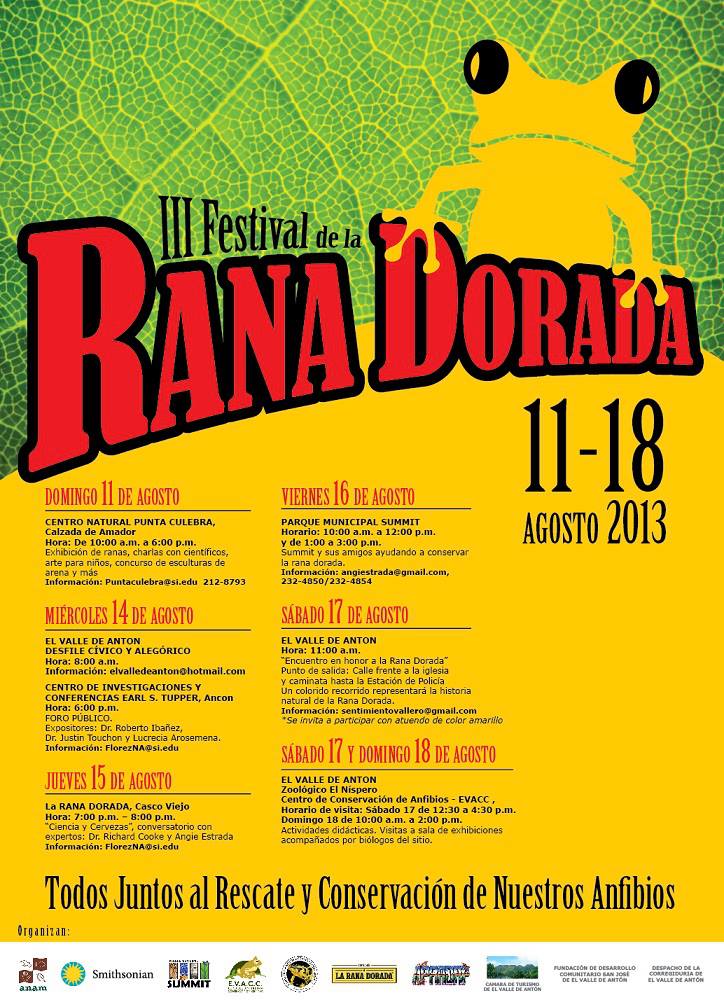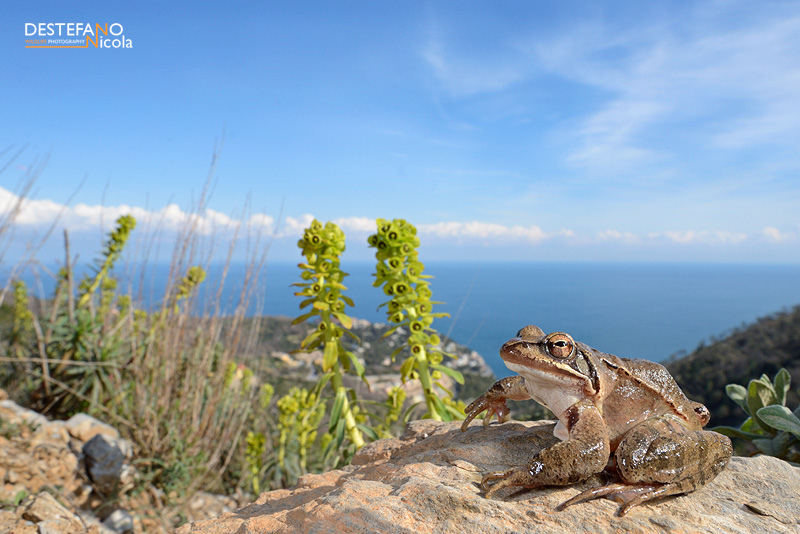THE HIGHLIGHTS
Participants: 6280
Volunteers: 44
School Groups: 34 (approx. 1000 kids)
Events: 9
Fliers Distributed: 1450
Frog Cookies Eaten: 100
MEDIA COVERAGE
Radio/TV Spots: 5
News Articles: 4
Media Websites: 4
The third annual Golden Frog Festival, consisting of events throughout Panama, united locals and visitors from around the world in a single mission: celebrating and conserving Panama’s amphibian treasures.
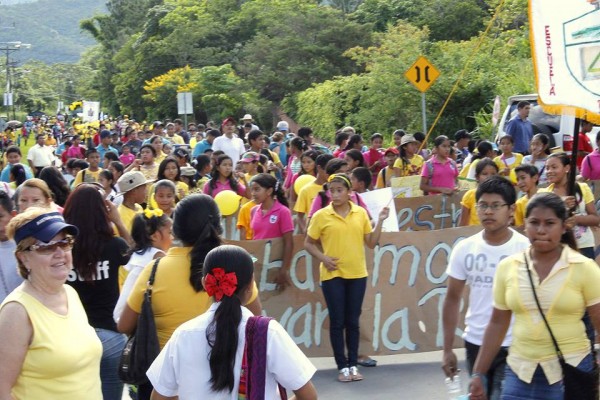
2013 Golden Frog Day Parade in El Valle
The festival began on Sunday, August 11 at the Smithsonian’s Punta Culebra Nature Center, where staff members from the Gamboa Amphibian Rescue Center led discussions and animal demonstrations for visitors of all ages. Children competed to make the best frog sculpture on the center’s sandy beach, then moved to decorating their own golden frog masks. Visitors learned about the crisis facing the country’s amphibian populations—from the deadly fungus Batrachochytrium dendrobatidis (Bd) to habitat loss—and of different ways to help preserve these valuable species. It was a fun-filled day for all ages.
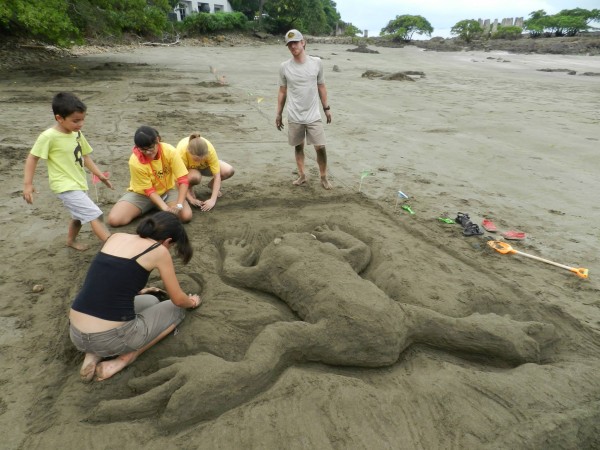
Frog sandcastle at Punta Culebra Photo: Smithsonian Tropical Research Institute
The Smithsonian’s Tropical Research Institute (STRI) hosted several mid-week events in both English and Spanish. In STRI’s weekly “Tupper Talk,” Dr. Myra Hughey spoke on her cutting-edge research in how understanding the bacterial components of a frog’s skin can help elucidate ways to combat Bd infection. Hughey’s lecture targeted the scientific community, while the following day a public forum offered visitors of all backgrounds and ages the chance to hear from Dr. Roberto Ibanez, one of the chief scientists at the Panamanian Amphibian Rescue and Conservation (PARC) project; Lucrecia Arosemena, whose tireless efforts helped prompt the Panamanian legislature to recognize August 14, 2010, as the first national Golden Frog Day; and Dr. Justin Touchon, who humorously explored a number of interesting and little known facts about frogs. (For example, until his talk, I had no idea that some female frogs select their mates based on the complexity of their calls—or that those complex calls that woo the most females also make males more vulnerable to predators such as bats.)
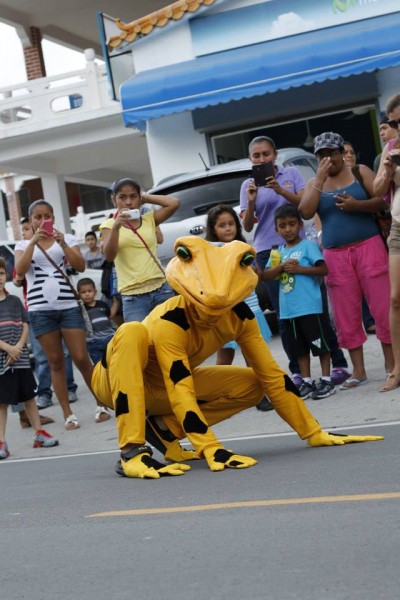
In continued efforts to build public involvement, STRI and PARC personnel also spoke at La Rana Dorada pub in Casco Viejo, where Dr. Richard Cooke enthralled many casual passersby with his tales of the psychotropic properties of frogs and in a talk titled “It’s not easy being green,” Angie Estrada offered a moving plea for conservation and action. These talks proved so inspiring that by evening’s end, several audience members had decided to start volunteering with PARC.

Edgardo Griffith presenting a lesson on frog conservation in El Valle schools
Finally, the week wrapped up with events for schoolchildren and families at both Gamboa’s Summit Zoo and the El Valle Amphibian Conservation Center. Throughout the weekend, visitors saw the frogs—including several golden frogs successfully hatched in captivity, learned about the valuable contributions amphibians make to the Panamanian ecosystem, and discovered how to help conserve these animals. In El Valle, the local golden frog parade featured floats and costumes galore—one child dressed as a golden frog princess; another, a morphologically accurate tadpole. After learning that golden frogs use semaphore, a form of hand gestures, for communication, some children compiled a dance to mimic their movements. As dusk fell in the mountains that night, I heard one shimmying teenage girl explain to another, “If I were a golden frog, this is how I’d call my mate.” Her hands circled her torso, then she raised her palms to the sky. From a distance, she probably looked like any teenager bouncing to the beat of her favorite song. But I was close enough to hear her explain, “And this is how I’d protect my territory,” and I knew this dance stemmed not from the idle energy of a teenager on holiday, but from an engagement that just might lead to action.
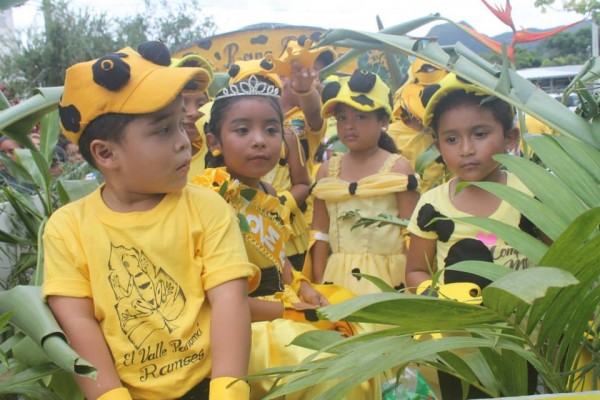
Kids on the Golden Frog Float on the 2013 Golden Frog Day Parade
Somewhere nearby a woman exclaimed, “This year’s festival was amazing! Next year’s will be even better!” With your help, it will. If you’d like to be involved as a volunteer for amphibian rescue, please contact us. See you in 2014!
-Elizabeth Wade, Panama Amphibian Rescue and Conservation Project Volunteer


